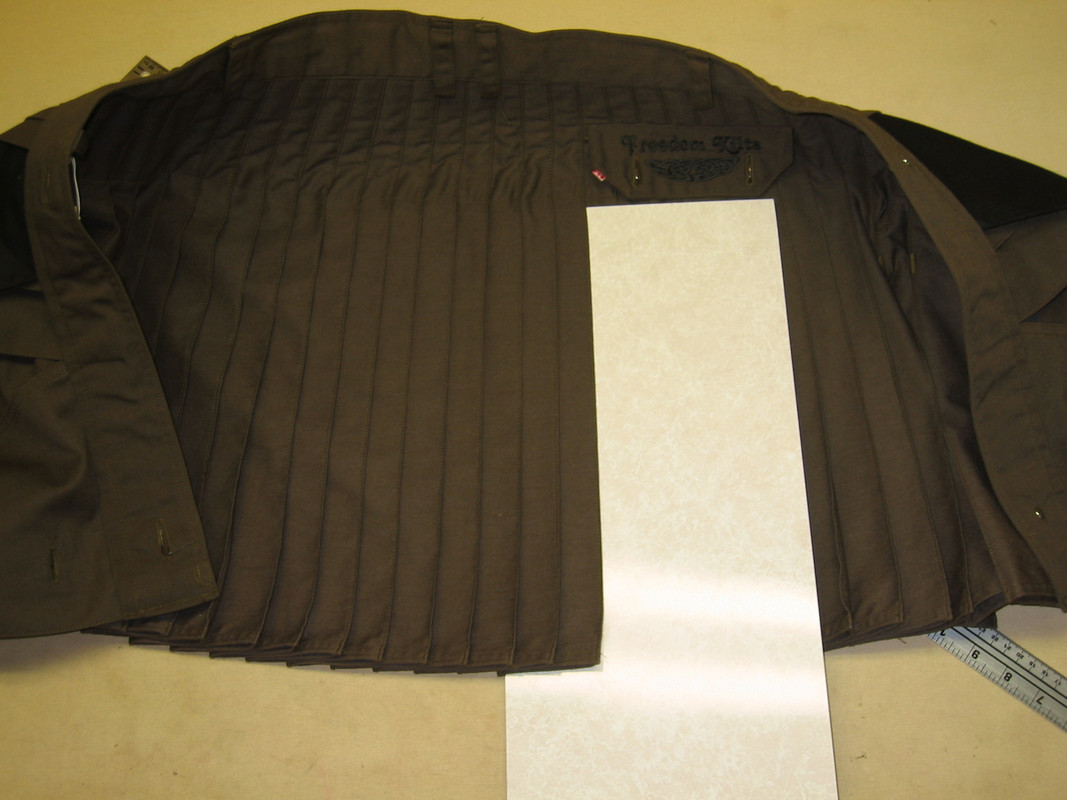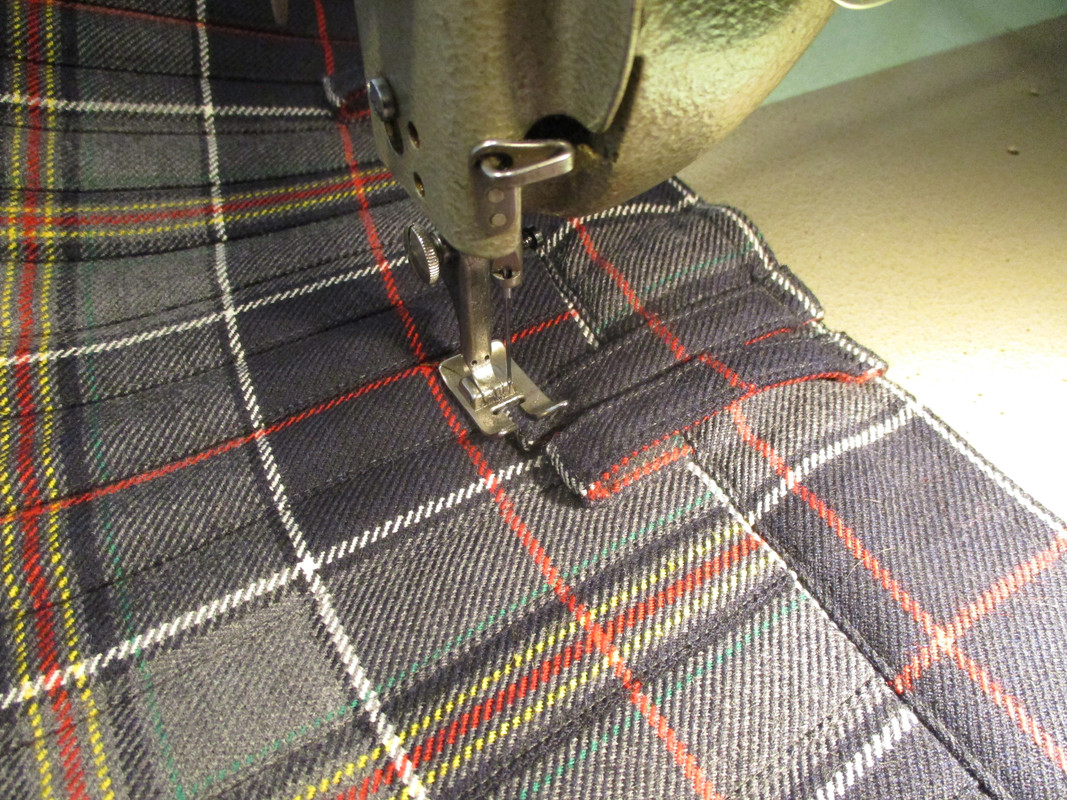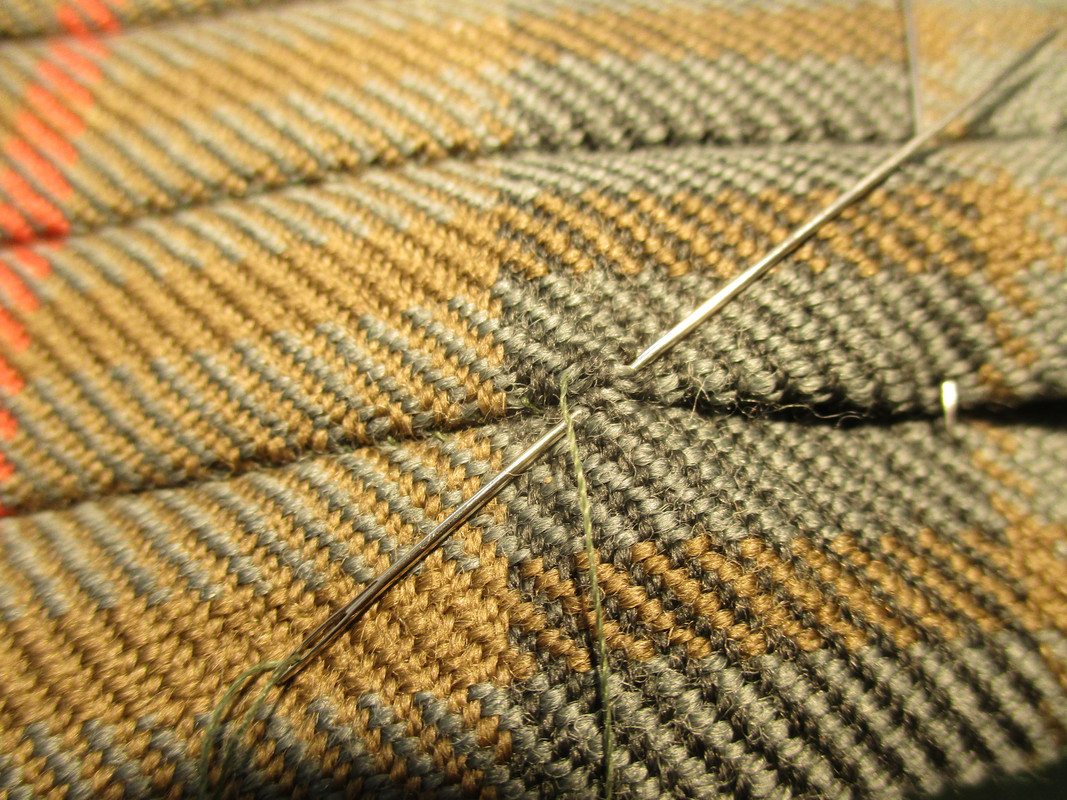|
-
13th October 21, 04:33 PM
#1
Sewn down pleats?
I’m having a new kilt made, & have the option for a sewn down portion near the waistband so that sitting won’t cause wrinkles in the wrong places. Does this diminish the swish of the kilt? I’m going for a knife pleat. Let me know uour experiences thanks.
Also thoughts on elastic band bear the bottom of the kilt; is that a similar purpose as to the above?
-
-
14th October 21, 03:39 AM
#2
Having the upper portion of the pleats sewn in place is normal on a conventional kilt - are you thinking of having the pleats gathered and folded into place, but left unsewn? Will this rely on the waistband to secure the pleats?
Having a length of eleastic sewn to the inside of the pleated section keeps the pleats 'under control' but the free movement and 'swish' will be greatly reduced. Personally, I would advise against it.
-
-
14th October 21, 05:24 PM
#3
Yes on ordinary traditional modern kilts the pleats are sewn approximately 1/3rd of the way down.
I was just looking through my photos and usually the place where the sewing stops is a bit hard to spot.
Here's one photo, an Army kilt, where you can see it fairly well

Where the pleats are sewn shows up best here, but for the wrong reason! This is an example of somebody taking a kilt to the dry-cleaners who didn't know how to correctly press the pleats

Last edited by OC Richard; 14th October 21 at 05:27 PM.
Proud Mountaineer from the Highlands of West Virginia; son of the Revolution and Civil War; first Europeans on the Guyandotte
-
-
14th October 21, 05:38 PM
#4
 Originally Posted by OC Richard

Yes on ordinary traditional modern kilts the pleats are sewn approximately 1/3rd of the way down.
I was just looking through my photos and usually the place where the sewing stops is a bit hard to spot.
Here's one photo, an Army kilt, where you can see it fairly well

Where the pleats are sewn shows up best here, but for the wrong reason! This is an example of somebody taking a kilt to the dry-cleaners who didn't know how to correctly press the pleats

I should have made it clear that the optional sewing down referred to the portion of the kilt a bit further down. What are your experiences with correct creases getting undone for example by sitting against the crease with your buttocks, on normal kilts? Just wondering the added benefit of continuing down the sewn part a but more.
-
-
14th October 21, 05:41 PM
#5
 Originally Posted by Kriegbert

I should have made it clear that the optional sewing down referred to the portion of the kilt a bit further down. What are your experiences with correct creases getting undone for example by sitting against the crease with your buttocks, on normal kilts? Just wondering the added benefit of continuing down the sewn part a but more.
I've not heard of sewing the pleats further down than the point past where they're sewn down, which I suppose is an oxymoron.
If you sew down the pleats, they don't function as pleats any more. It doesn't make any sense to me.
Proud Mountaineer from the Highlands of West Virginia; son of the Revolution and Civil War; first Europeans on the Guyandotte
-
The Following User Says 'Aye' to OC Richard For This Useful Post:
-
14th October 21, 09:24 PM
#6
 Originally Posted by Kriegbert

I should have made it clear that the optional sewing down referred to the portion of the kilt a bit further down. What are your experiences with correct creases getting undone for example by sitting against the crease with your buttocks, on normal kilts? Just wondering the added benefit of continuing down the sewn part a but more.
From whom are you purchasing a kilt?
The only time I've selected "sewn-down pleats" as an option was with Sport Kilt, who make casual kilts from lightweight 8oz "polyblend" cloth. If you don't select the sewn-down pleats, they are only help in place by the waist band. With the sewn-down pleats, the 8oz fabric still does a terrible job of holding a pleat.
-
-
14th October 21, 11:53 PM
#7
Perhaps you are referring to edge stitching of the pleats.
This is usually done on kilts made from Cotton or Cotton blend fabrics as they do not hold the crease as well as wool or Poly/Rayon blends.
For example this is a black, polyester/cotton blend fabric. It does not have a kilt selvedge so is hemmed and the fabric does not hold a pleat crease well so the edges of all the pleats are edge stitched.
This also shows the Fell Area where the pleats are tapered and sewn down to shape the kilt.

This edge stitching is usually found only on machine stitched kilts even if the fabric is 16oz 100% wool.

With machine stitching you will always see a line of stitching vs the stitching on a hand stitched kilt which is totally invisible.

Last edited by Steve Ashton; 14th October 21 at 11:59 PM.
-
The Following 3 Users say 'Aye' to Steve Ashton For This Useful Post:
-
15th October 21, 11:10 AM
#8
 Originally Posted by Steve Ashton

Perhaps you are referring to edge stitching of the pleats.
This is usually done on kilts made from Cotton or Cotton blend fabrics as they do not hold the crease as well as wool or Poly/Rayon blends.
For example this is a black, polyester/cotton blend fabric. It does not have a kilt selvedge so is hemmed and the fabric does not hold a pleat crease well so the edges of all the pleats are edge stitched.
This also shows the Fell Area where the pleats are tapered and sewn down to shape the kilt.

This edge stitching is usually found only on machine stitched kilts even if the fabric is 16oz 100% wool.

With machine stitching you will always see a line of stitching vs the stitching on a hand stitched kilt which is totally invisible.

I believe I was referring to what this video was reffering toL
https://www.youtube.com/watch?v=7aGnj1wtL9Y
-
-
15th October 21, 12:31 PM
#9
 Originally Posted by Kriegbert

Well Sports kilts were designed for people who competed in Heavy Events and just want a bit of tartan around their waist. They aren't constructed like traditional kilts. That's why they add sewing down the pleats to the fell as an option. From their website:
"You can add custom features to your Original Sport Kilt, our favorite is the Sewn Down Pleats, which makes the kilt lay flatter across your backside, makes the pleats break apart lower down like a traditional kilt for men, and also makes it easier to care for because the pleats never lose their knife edge and need to be re-pressed around the top.:
Emphasis mine.
In short, if you're getting a traditional kilt made, the pleats are sewn down and open around the bottom of your...bottom... There's no reason to sew them down further than that. You'll just look like the kilt wasn't made for you and doesn't fit properly, if anyone noticed at all.
Natan Easbaig Mac Dhòmhnaill, FSA Scot
Past High Commissioner, Clan Donald Canada
“Yet still the blood is strong, the heart is Highland, And we, in dreams, behold the Hebrides.” - The Canadian Boat Song.
-
-
15th October 21, 12:32 PM
#10
 Originally Posted by Kriegbert

The video shows the usual sewing of the fell, not normally an optional extra.
I have made some kilts from fabrics which refused to hold a crease, and I did sew along the edge of the pleats to keep them looking tidy but the actual pleat was still loose and could unfold except for that small amount.
Anne the Pleater
I presume to dictate to no man what he shall eat or drink or wherewithal he shall be clothed."
-- The Hon. Stuart Ruaidri Erskine, The Kilt & How to Wear It, 1901.
-
The Following User Says 'Aye' to Pleater For This Useful Post:
 Posting Permissions
Posting Permissions
- You may not post new threads
- You may not post replies
- You may not post attachments
- You may not edit your posts
-
Forum Rules
|
|

